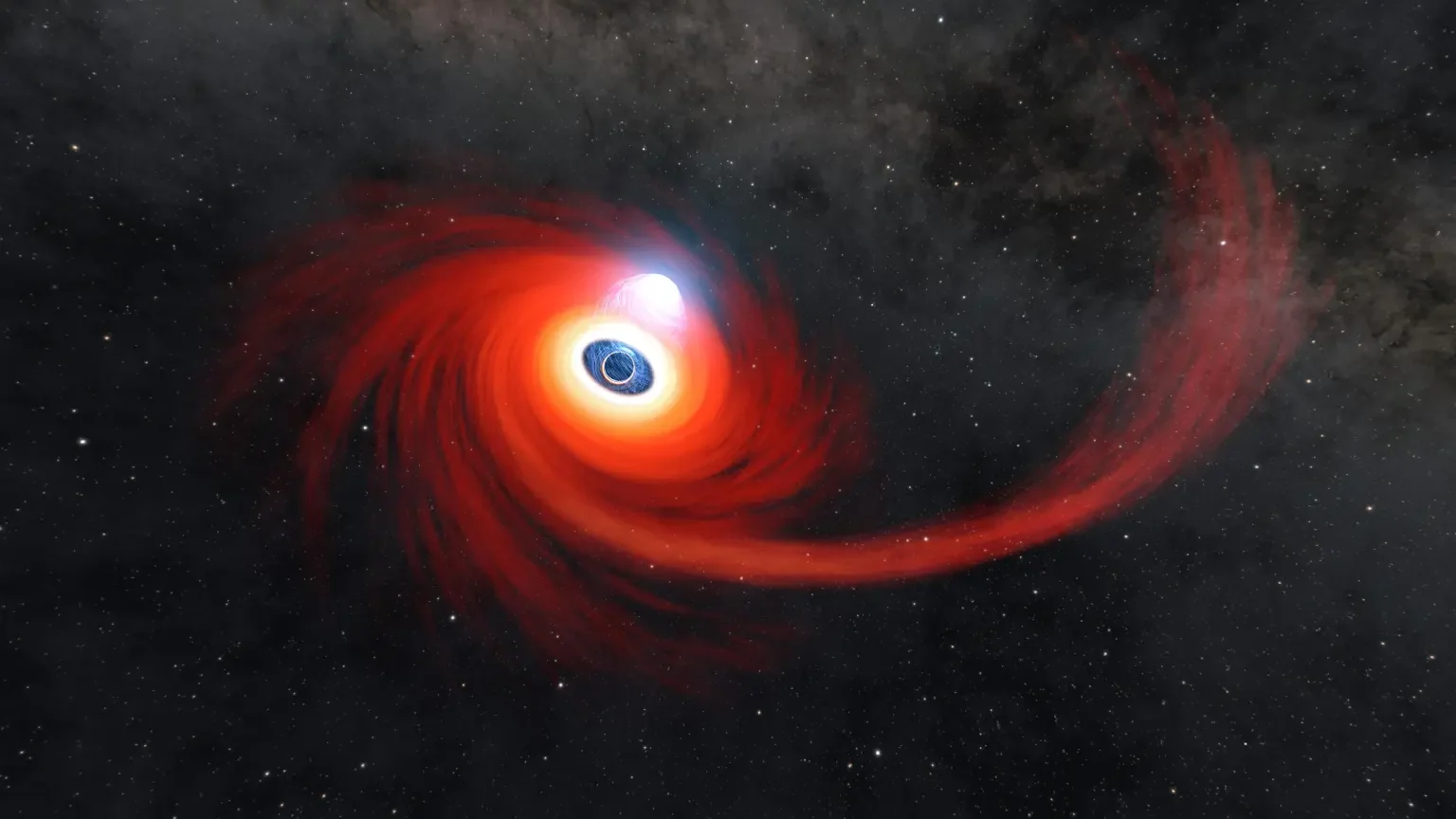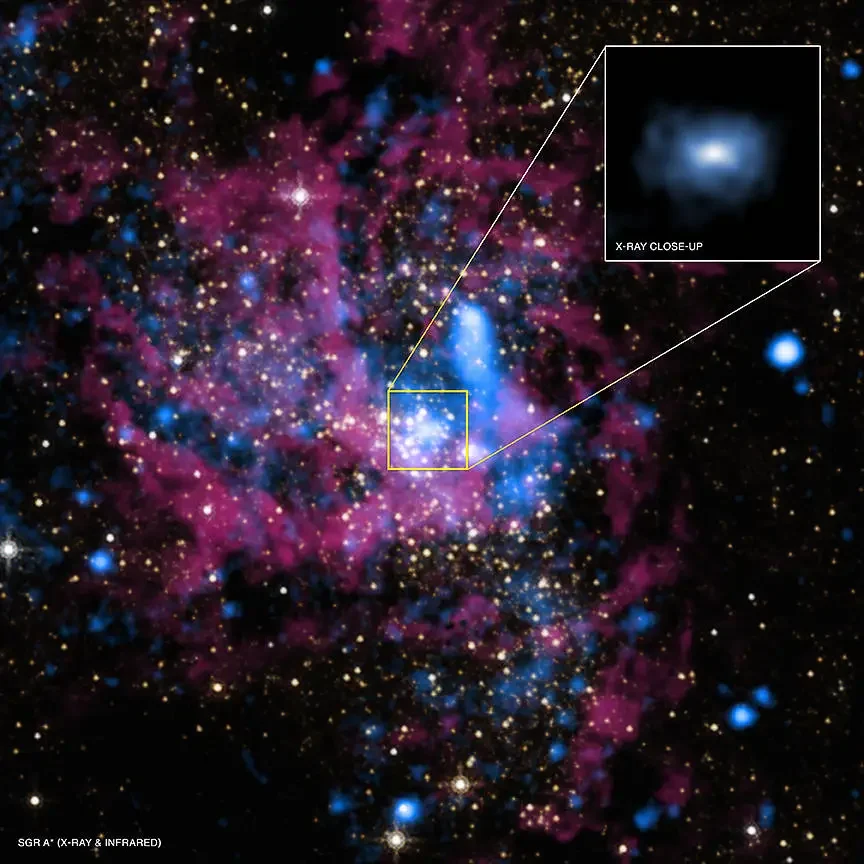The Black Hole in Your Kitchen Sink, Part 1
There’s a lot more in common between black holes and the water in your kitchen sink than you might think.
Black holes are infinitely deep pits of gravity in space. They feature forces so strong that not even light can escape their pull. Stars furiously whip around the bottomless pits, and sometimes are gobbled up when a black hole tears them to shreds and sucks them in like superheated strings of spaghetti.
Artist’s vision of one of three black holes NASA astronomers recently discovered feasting on their companion stars. — Image courtesy of NASA
Don’t worry. Like bears, black holes aren’t dangerous as long as you don’t get too close.
You’re in orbit around one right now, in fact. It’s Sagittarius A*, the supermassive black hole at the center of our Milky Way galaxy (the asterisk is part of the name) that’s 4 million times as heavy as our Sun.
Fortunately, the galaxy center is about 500,000 trillion kilometers away, so you’ll never have to worry about suffering the sort of shredding that threatens its nearby stars.
Supermassive black hole Sagittarius A* (Sgr A*) is located in the middle of the Milky Way galaxy. — Image courtesy of NASA
Because nothing that falls in can ever come back out, there’s only one way to see what’s inside a black hole in space — by taking a trip into one. It would be your last act (probably). At least, you wouldn’t be able to come back to tell us about it.
Still, there’s one way to see what a black hole would look like if you could slice one in half. That’s because the laws of physics that black holes obey are the same ones that control the flow of water in your kitchen sink.
If you turn on the water in your kitchen to a steady stream and let it hit an open space in the basin, it creates a distinctive pattern. In 2011, physicists in France discovered a startling resemblance between the pattern of water in sink basin and black holes. Einstein’s equations of general relativity, they found, perfectly describe them both.
A stream of water spreads out when it hits a smooth surface, creating a pattern with features comparable to those of black and white holes in space.
Technically, the water in your sink resembles a white hole. That is, the water inside the liquid white hole in your sink is washed outward, while the reverse would happen if you could make a liquid black hole.
Mathematically, though, a white hole is just a black hole running in reverse. When you take a photograph, like the one above, you can’t tell which way time is running. So the water pattern resembles both black holes and white holes, at least as one in space would look if you could cut one in half and take a snapshot of the space inside them.
Three features of the water pattern are comparable to black (and white) holes in space. The smooth circular region is like the interior, where gravity is so strong that anything in it is swept inward (in a black hole) or outward (in a white hole) faster than the speed of light.
The outer, burbling region is like normal space outside of a black or white hole.
And, finally, the circular, raised ring surrounding the smooth disk is the event horizon. In space, it marks the point of no return between the faster-than-light flow inside a black or white hole, and the normal space outside.
The mathematical similarities between the water in your sink and the gravitational monstrosities in space offers a handy, and safe, way to study extreme gravity at home.
In my next post, I'll tell you how you can do some simple experiments, in the comfort of your own kitchen, to discover the strange and surprising features of black and white holes.



